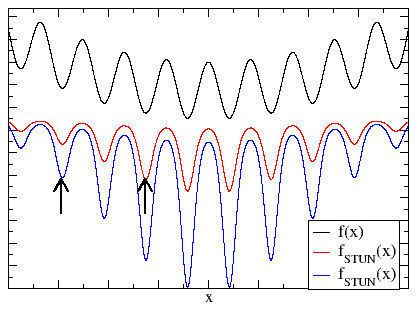 | ||
In numerical analysis, stochastic tunneling (STUN) is an approach to global optimization based on the Monte Carlo method-sampling of the function to be objective minimized in which the function is nonlinearly transformed to allow for easier tunneling among regions containing function minima. Easier tunneling allows for faster exploration of sample space and faster convergence to a good solution.
Contents
Idea
Monte Carlo method-based optimization techniques sample the objective function by randomly "hopping" from the current solution vector to another with a difference in the function value of
The general idea of STUN is to circumvent the slow dynamics of ill-shaped energy functions that one encounters for example in spin glasses by tunneling through such barriers.
This goal is achieved by Monte Carlo sampling of a transformed function that lacks this slow dynamics. In the "standard-form" the transformation reads
The effect of such a transformation is shown in the graph.
Dynamically Adaptive Stochastic Tunneling
A variation on always tunneling is to do so only when trapped at a local minimum.
